




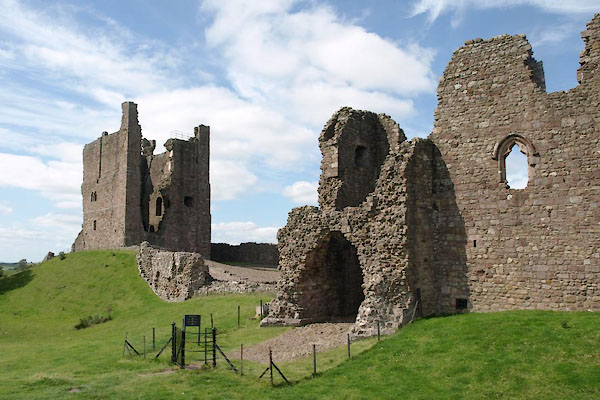
BVC60.jpg (taken 29.7.2011)
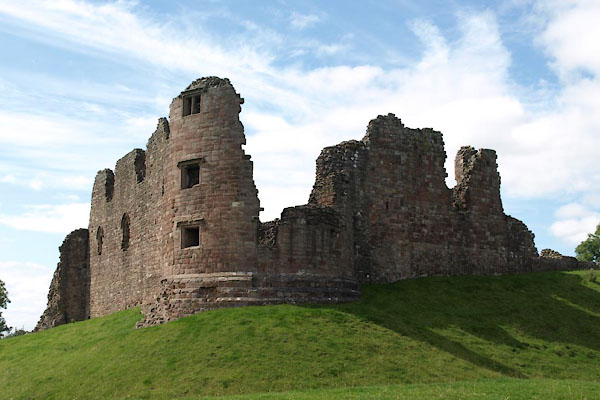
BVC59.jpg (taken 29.7.2011)
placename:- Brough Castle
placename:- Caesar's Tower
"Brough Castle / Ruions of / Caesar's Tower / Well"
placename:- Burgh Castle
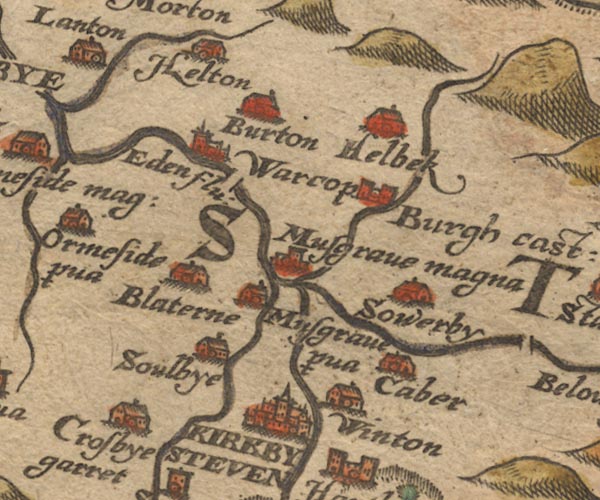
Sax9NY71.jpg
Building with two towers, symbol for a castle. "Burgh cast:"
item:- private collection : 2
Image © see bottom of page
placename:- Burgh Castle

MER5WmdA.jpg
"Burgh ca."
circle, building/s, tower, tinted red
item:- Armitt Library : 2008.14.3
Image © see bottom of page
placename:- Burgh Castle
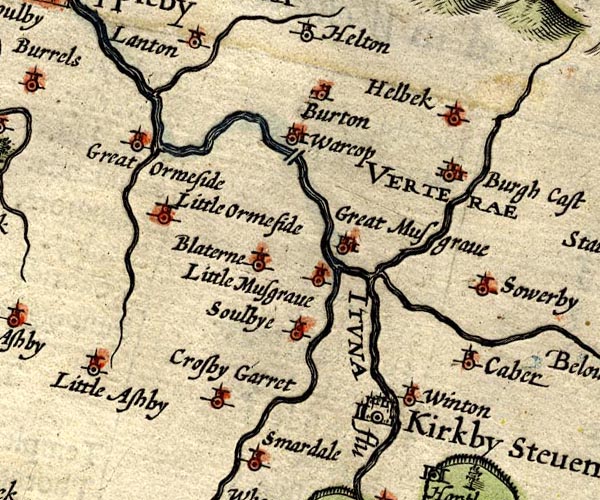
SP14NY71.jpg
"Burgh Cast"
circle, buildings and tower
item:- Armitt Library : 2008.14.5
Image © see bottom of page
placename:- Burgh Castle
 click to enlarge
click to enlargeSIM3.jpg
"Burgh Castle N"
and tabulated distances; B on thumbnail map
item:- private collection : 50.39
Image © see bottom of page
placename:- Burgh Castle

JAN3NY71.jpg
"Burgh Cast."
Buildings and tower with flag.
item:- JandMN : 88
Image © see bottom of page
placename:- Brough Castle
"Brough Castle"
in "Brough"
placename:- Burgh Castle
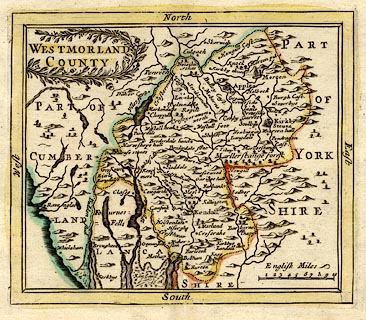 click to enlarge
click to enlargeSEL7.jpg
"Burgh Cast."
circle; castle
item:- Dove Cottage : 2007.38.87
Image © see bottom of page
placename:- Burgh Castle
placename:- Vertara

MD10NY71.jpg
"Burgh Castle ol Vertara"
Circle.
item:- JandMN : 24
Image © see bottom of page
placename:- Brough Castle
item:- fire, Brough Castle
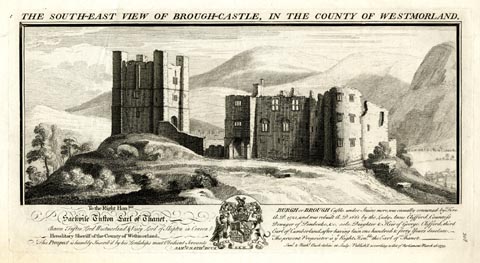 click to enlarge
click to enlargeBU0220.jpg
printed, top "THE SOUTH-EAST VIEW OF BROUGH-CASTLE, IN THE COUNTY OF WESTMORLAND."
printed, bottom "BURGH or BROUGH Castle under Staine more, was casually consumed by Fire A.D.1521, and was rebuilt A.D.1661 by the Lady Anne Clifford, Countess/ Dowager of Pembroke, &c. sole Daughter & Heir of George Clifford, third Earl of Cumberland, after having lain one hudred & forty Years desolate. The present Proprietor is ye Right Honble. the Earl of Thanet. / Saml. &Nathl. Buck delin: et Sculp: Publish'd according to Act of Parliamt. March 26. 1739."
item:- Armitt Library : 1959.67.20
Image © see bottom of page
 goto source
goto sourcePage 1025:- "... [Church Brough] ... with a Castle and a small Fort called Caesar's Tower, the former of which being demolished, was rebuilt not very many Years ago by a Countess of Pembroke. ..."
placename:- Brough Castle
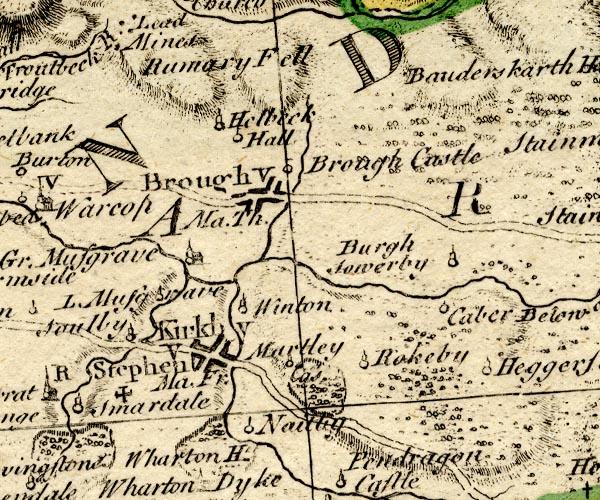
BO18NY71.jpg
"Brough Castle"
circle and flag
item:- Armitt Library : 2008.14.10
Image © see bottom of page
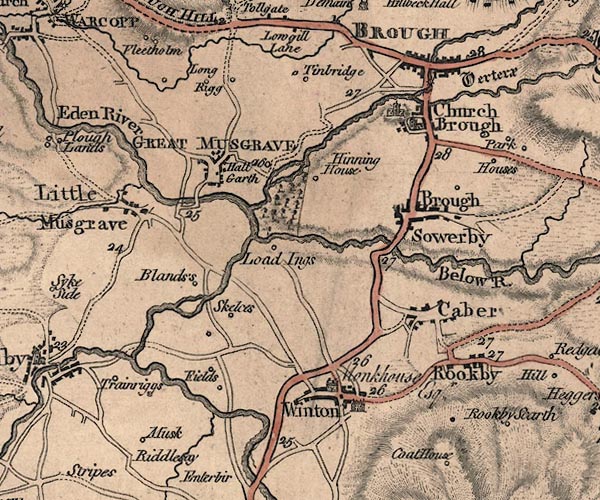
J5NY71SE.jpg
castle
item:- National Library of Scotland : EME.s.47
Image © National Library of Scotland
item:- Caesar's Tower
 goto source
goto sourcePennant's Tour 1773, page 136 "... I cannot trace the founder of the present castle: from the square form of its towers, it was certainly of Norman origin, - probably very early, for in 1174 it was garrisoned by the English, and taken by William king of Scotland in an inroad made by him in the absence of our great monarch Henry, but which soon after lost him his liberty, being defeated and taken by some gallant leaders on his retreat from the siege of Alnwick. It had been a considerable place; some square towers remain; the Keep, called Caesar's Tower, is the most considerable. At one side of the castle are the ruins of a rounder, an addition it must have received long after its foundation. It had been protected by vast fosses; those on one side are double, and have between them a high space, possible the very site of the Roman Burgus. This castle was the property of Robert de Veteripont, and passed"
 goto source
goto sourcePennant's Tour 1773, page 137 "through his descendants to the great family of Cliffords. Henry lord Clifford, surnamed the Shepherd, kept here a magnificent Christmas; soon after which, in 1521, it was accidentally burnt down, and continued in ruins till it was restored by his celebrated descendant Anne Clifford, as the inscription over the gate, (similar to that at Pendragon,) before it was taken down, recorded."
 goto source
goto sourcePage 157:- "..."
"... upper or church Brough (or Western), ... Here also stands the castle (a high square tower and not unlike Richmond castle), ... The castle having been burnt to the ground 1521, was rebuilt 1661 by the countess of Pembroke before-mentioned, and was again reduced to a ruin by Thomas earl of Thanet 1695. ..."
item:- roman coin; coin, roman
 goto source
goto source"..."
"Near the church, on a hill, are the ruins of an ancient castle, belonging to the earl of Thanet; part of the tower was standing till 1792, when it mostly fell down. On digging near the ruins, an urn, full of Roman silver coins was found, from which it appears to have been built in the time of the Romans."
item:- fire, 1521
 goto source
goto sourceGentleman's Magazine 1814 part 2 p.627 "..."
"BROUGH, (or Brough under Stanimore (sic), to distinguish it from other places of a similar name,) one stage on the London side of Appleby, is a town of no great importance, except that its Castle was one of the number belonging to the great Duchess of Pembroke; it is a fine remain, on a grand and commanding situation, towards the North of the town. A great fire happened here before the year 1521, which destroyed nearly all the internal timber work, with the lead roofs, &c. But the Duchess began to repair these extensive damages in 1660, and over the gate placed an inscription to that effect, which has long since been beaten down and destroyed. The strength of this Castle was very great. In addition to its defence by Nature, it had several deep fosses with high banks and ramparts between, the whole rising with very steep ascent."
 goto source
goto sourceGentleman's Magazine 1825 part 1 p.414
From the Compendium of County History:- "1176. King William of Scotland surprised Appleby castle, and utterly destroyed the town. In this inroad he sacked Brough Castle."
placename:- Brough Castle

Bel2Vgn2.jpg
Vignette on map of Westmorland. "BROUGH CASTLE "
item:- JandMN : 3
Image © see bottom of page
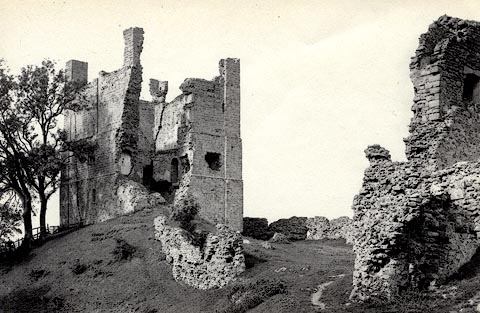 click to enlarge
click to enlargeHB0421.jpg
item:- Armitt Library : ALPS75
Image © see bottom of page
placename:- Brough Castle
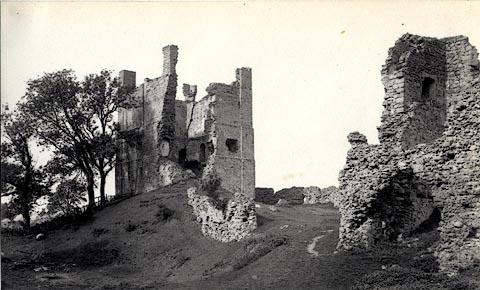 click to enlarge
click to enlargeHB0021.jpg
Vol.1 no.21 in an album, Examples of Early Domestic and Military Architecture in Westmorland, assembled 1910.
ms at bottom:- "21. / Brough Castle. Brough. E."
item:- Armitt Library : 1958.3165.21
Image © see bottom of page
placename:- Brough Castle
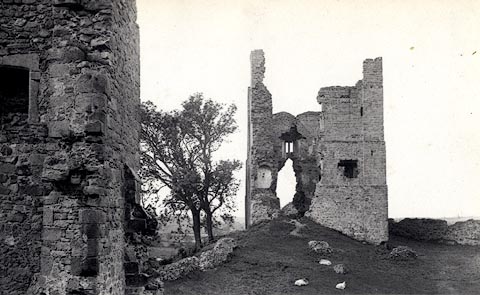 click to enlarge
click to enlargeHB0022.jpg
Vol.1 no.22 in an album, Examples of Early Domestic and Military Architecture in Westmorland, assembled 1910.
ms at bottom:- "22. / Brough Castle, The Keep from the West. Brough. E."
item:- Armitt Library : 1958.3165.22
Image © see bottom of page
placename:- Brough Castle
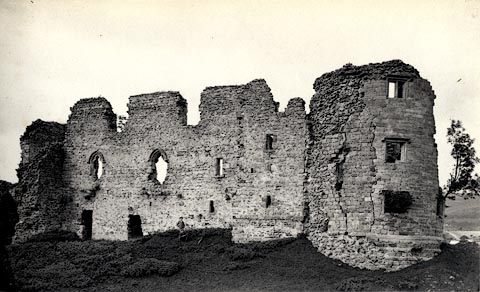 click to enlarge
click to enlargeHB0023.jpg
Vol.1 no.23 in an album, Examples of Early Domestic and Military Architecture in Westmorland, assembled 1910.
ms at bottom:- "23. / Brough Castle, The Gatehouse and Domestic Buildings. Brough. E."
item:- Armitt Library : 1958.3165.23
Image © see bottom of page
placename:- Brough Castle
 click to enlarge
click to enlargeTY5002.jpg
On p.31 of The Old Manorial Halls of Cumberland and Westmorland, by Michael Waistell Taylor.
item:- Armitt Library : A785.2
Image © see bottom of page
placename:- Brough Castle
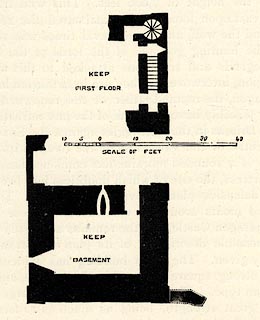 click to enlarge
click to enlargeTY5003.jpg
On p.33 of The Old Manorial Halls of Cumberland and Westmorland, by Michael Waistell Taylor.
item:- Armitt Library : A785.3
Image © see bottom of page
placename:- Brough Castle
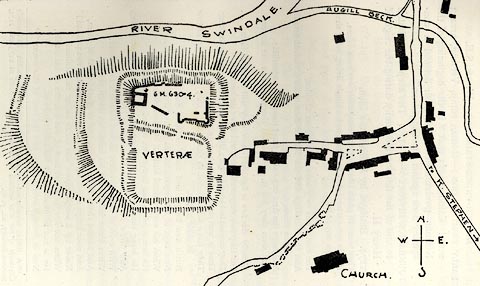 click to enlarge
click to enlargeCW0114.jpg
On p.81 of The Castles and Fortified Towers of Cumberland, Westmorland, and Lancashire North of the Sands, by John F Curwen.
printed at bottom:- "SITE PLAN OF BROUGH CASTLE."
item:- Armitt Library : A782.14
Image © see bottom of page
placename:- Brough Castle
 click to enlarge
click to enlargeCW0116.jpg
Tipped in opposite p.86 of The Castles and Fortified Towers of Cumberland, Westmorland, and Lancashire North of the Sands, by John F Curwen.
printed at bottom:- "BROUGH CASTLE, THE HALL."
item:- Armitt Library : A782.16
Image © see bottom of page
placename:- Brough Castle
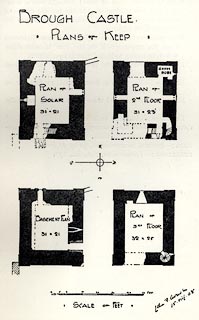 click to enlarge
click to enlargeCW0115.jpg
On p.85 of The Castles and Fortified Towers of Cumberland, Westmorland, and Lancashire North of the Sands, by John F Curwen.
printed at upper left:- "BROUGH CASTLE / PLANS OF KEEP"
item:- Armitt Library : A782.15
Image © see bottom of page
placename:- Brough Castle
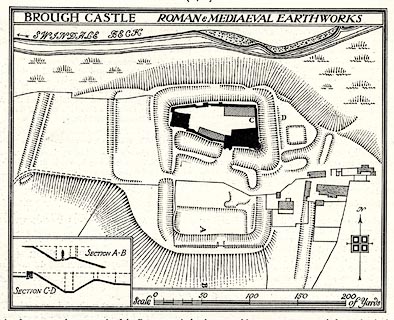 click to enlarge
click to enlargeHMW035.jpg
On p.48 of the Inventory of the Historical Monuments in Westmorland.
printed, top "BROUGH CASTLE ROMAN AND MEDIAEVAL EARTHWORKS"
RCHME no. Wmd, Brough 1
item:- Armitt Library : A745.35
Image © see bottom of page
placename:- Brough Castle
item:-
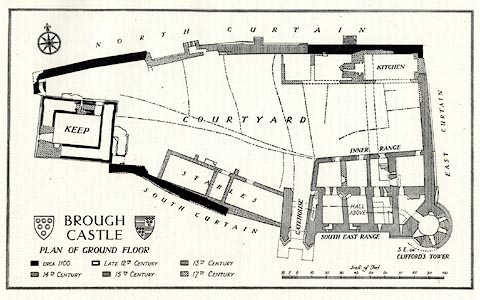 click to enlarge
click to enlargeHMW038.jpg
On p.51 of the Inventory of the Historical Monuments in Westmorland.
printed, lower left "BROUGH / CASTLE / PLAN OF GROUND FLOOR"
RCHME no. Wmd, Brough 3
item:- Armitt Library : A745.38
Image © see bottom of page
placename:- Burc Castle
placename:- Burg Castle
placename:- Burgh Castle
placename:- Burgo Castle
placename:- Brough Castle
item:- sheep
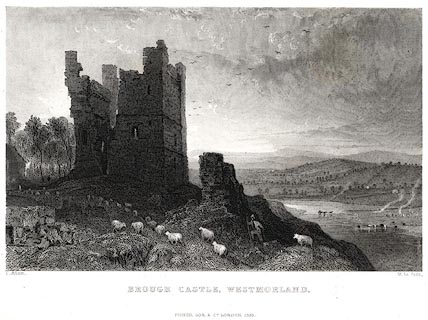 click to enlarge
click to enlargePR0615.jpg
Originally in vol.2 no.12 in Westmorland, Cumberland, Durham and Northumberland Ilustrated, with descriptions by Thomas Rose, published by H Fisher, R Fisher, and P Jackson, Newgate, London, about 1835.
item:- Dove Cottage : 2008.107.562
Image © see bottom of page
placename:- Brough Castle
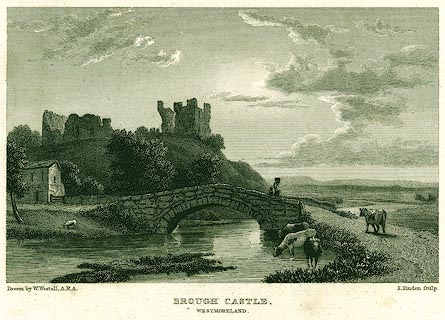 click to enlarge
click to enlargePR0152.jpg
This engraving is used as a vignette on Bell's map of the county, 1833.
printed at bottom left, right, centre:- "Drawn by W. Westall, A.R.A. / E. Finden sculp. / BROUGH CASTLE, / WESTMORELAND."
item:- Dove Cottage : 2008.107.152
Image © see bottom of page
placename:- Castle of Brough
item:- tower; Caesar's Tower
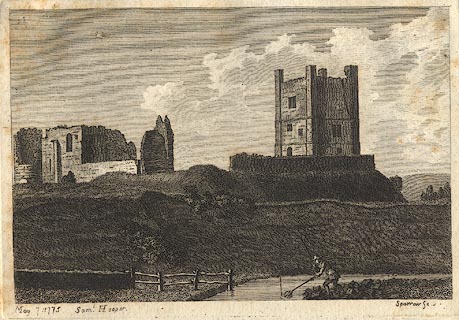 click to enlarge
click to enlargeBNF20.jpg
"BROUGH CASTLE, WESTMORELAND."
"THIS castle stands near the north-east part of the county, and on the western bank of the river Eden. It is by some writers deemed a Roman building. Possibly a Roman fortress might have stood here before the Conquest; but the present edifice has incontestable marks of Norman origin. In the Additions to Camden, printed in Bishop Gibson's edition, the present structure is attributed to the Countess of Pembroke, if the following words are to be taken literally: 'Here also stands the Castle of Brough, and a Tower called Caesar's Tower, or the Fort before-mentioned. The Castle, having been rased to the ground, was rebuilt, not long since, by the Countess of Pembroke.' But that this is a mistake, is evident from an inscription formerly standing over the gateway, but now thrown down, and laid under the water-wheel of Brough Mill; of which this is a genuine copy:"
"'THIS castle of Brough under Stainmore, and the Great Tower of it, was repaired by the Lady Ann Clifford, Countess Dowager of Pembroke-Dorse, and Montgomery, Baron Clifford, Westmoreland and Visey, High Sheriff by inheritance of the County of Westmoreland, and Lady of the Honour of Skipton in Craven, in the year of our Lord God 1659; so as she came to lie in it herself for a little while in September 1661, after it had lain ruinous without timber, or any covering, ever since the year 1521, when it was burnt by a casual fire. Isa. chap. lviii. ver. 12. 'God's name be praised.'"
"THE above Inscription manifestly proves that the repairs done by the Countess were chiefly internal, and that the ruins now seen are those of the original building: but by whom or when they were built, neither Leland, Camden, or any other of the Topographical Writers (at least those in print), mention; tho', as has been above observed, the similarity of its Keep to those of Dover, Bamborough, Rochester, the Tower of London, and many others, plainly evince it was constructed on the Norman model."
"THE present proprietor of these ruins is the Earl of Thanet. Of late years they have been much demolished for the sake of the materials, which have been used in building stables, garden walls, and other conveniences; and particularly about the year 1763, a great part of the north-east round tower was pulled down to repair Brough Mill, at which time the Mason therein employed, for the sake of the lead and iron with which it was fixed, displaced the stone which the Countess of Pembroke caused to be set over the gateway, on which was the inscription before cited."
"CAMDEN describing this country says, 'Here Eden seems to stop its course, that it may receive some rivulets; upon one of which, scarce two miles from Eden itself, stood Verterae, an ancient town mentioned by Antoninus and the Notitia; from the latter of which we learn, that in the decline of the Roman empire a Praefect of the Romans quartered there with a band of the Directores. The town itself is dwindled into a village, which is defended with a small fort, and its name is now Burgh; for it is called Burgh under Stanmore, i. e. a Brough under a Stony Mountain. It is divided into two. The Upper, otherwise Church-Brough, where the Church standeth, of which Robert Eglesfield, Founder of Queen College in Oxford, was Rector, and procured the appropriation thereof from King Edward III. to the said College.' - And again: 'And near the Bridge is a Spaw-well, which hath not long been discovered. The other village is called Lower Brough, from its situation; and Market Brough from a market held there every Thursday. In the time of the latter Emperors (to observe this once for all) the Little Castles, which were built for the emergent occasions of war, and stored with provisions, began to be called Burgi; a new name, which, after the translation of the Empire into the East, the Germans and others seem to have taken from the Greek [ ]. And hence the Burgundians have their name from inhabiting the Burgi; for so that Age called the dwellings planted at a little distance from one another along the frontiers. I have read no more concerning this place, but that in the beginning of the Norman Government, the English formed a conspiracy here against William the Conqueror. I dare be positive that this Burgh was the Old Verterae; both because the distance, on one side from the Levatrae, and the other from Brovonacum, if resolved into Italian miles, exactly agrees with the number assigned by Antoninus; and also, because a Roman military road, still visible by its high ridge, runs this way to Brovonacum by Aballaba, mentioned in the Notitia; the name whereof is to this day kept so entire, that it plainly shews it to be the same, and leaves no ground for dispute; for instead of Aballaba we call it at this day by contraction Appleby."
"ANNO 1774, William King of Scotland taking advantage of the absence of King Henry, then in France, quelling a rebellion excited by his sons, invaded England at the head of an army, chiefly composed of Flemmings, and took this Castle, together with those of Appleby and Prudehow; but four hundred horsemen being assembled by Robert de Stouteville, Ralph Granville, William Vesey, Barnard Balliol, and Odenotte de Humfreville, they came up with the Scots, who were retiring from the seige of Alnwick; and finding them dispersed over the country in search of plunder, whereby they had left the King slightly guarded, they attacked, and with very little bloodshed on either side made him prisoner."
"THIS passage, which is mentioned by almost all our Historians, serves to shew that Brough-Castle was then in being; built, perhaps, at the time of the Conspiracy mentioned by Camden"
"This View was drawn Anno 1774."
item:- Dove Cottage : Lowther.32
Image © see bottom of page
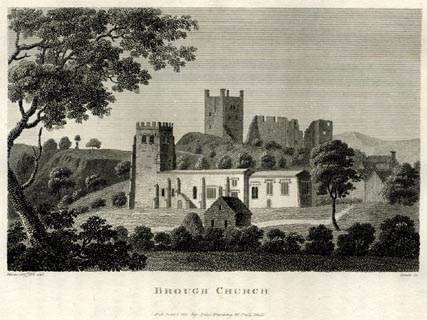 click to enlarge
click to enlargePEN619.jpg
Tipped in opposite p.137 of A Tour from Downing to Alston Moor, 1773, by Thomas Pennant.
Brough Castle in the background.
printed at bottom left, right, centre:- "Moses Griffith. Del / Comte Sc / BROUGH CHURCH / Pub June 7 1801 by Edw Harding 98 Pall Mall."
item:- Armitt Library : A1057.19
Image © see bottom of page

BLX15.jpg (taken 21.4.2006)
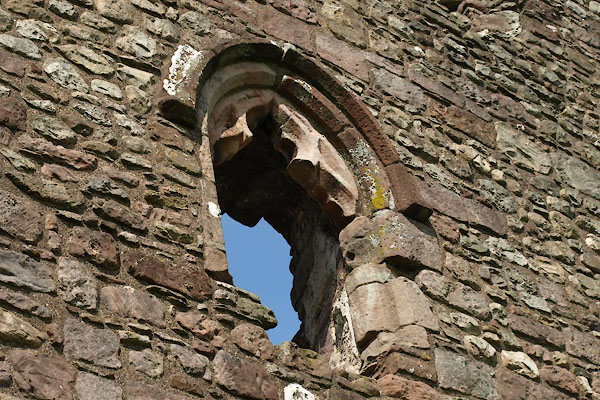
BVC61.jpg (taken 29.7.2011)
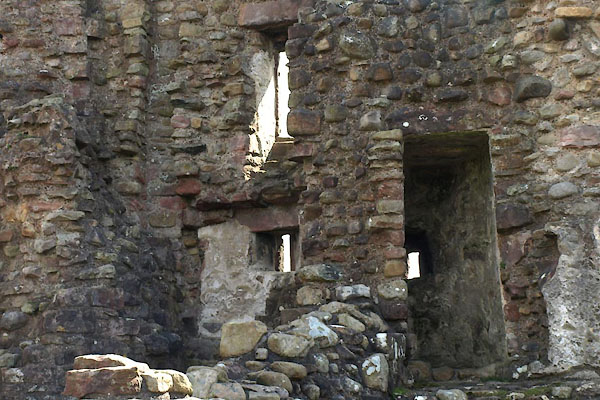
BVC62.jpg (taken 29.7.2011)
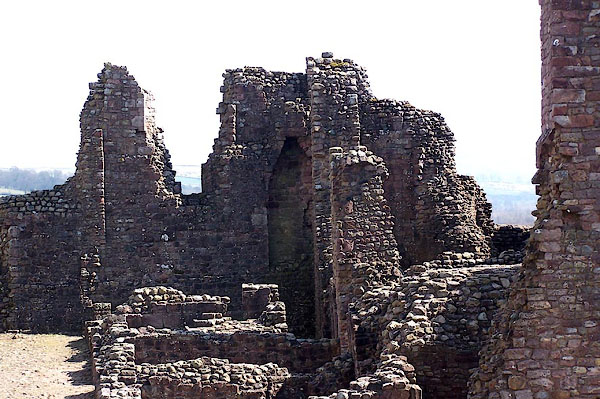
BLX16.jpg (taken 21.4.2006)
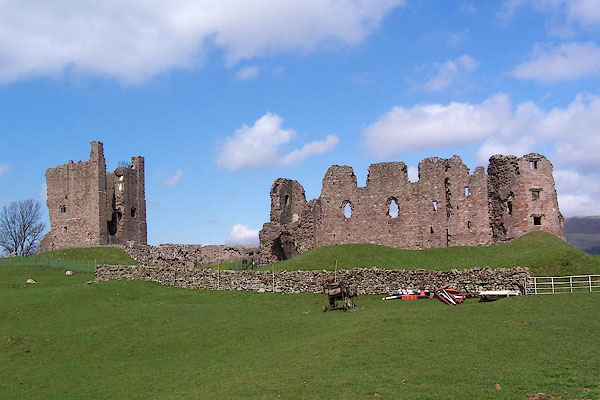
BLX13.jpg (taken 21.4.2006)
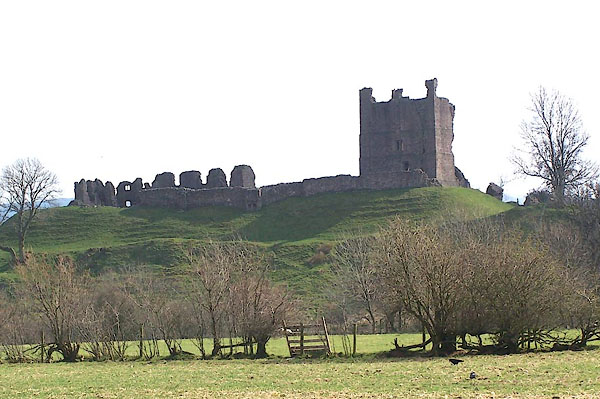
BLX48.jpg (taken 21.4.2006)
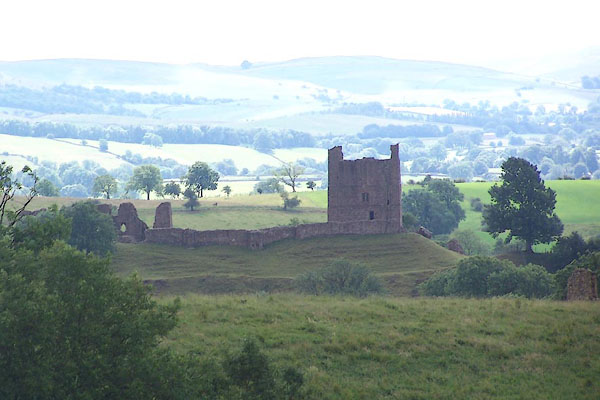
BMI25.jpg (taken 7.7.2006)
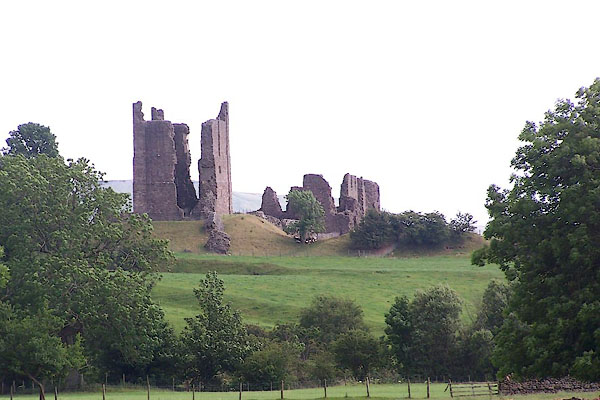
BMI24.jpg (taken 7.7.2006)
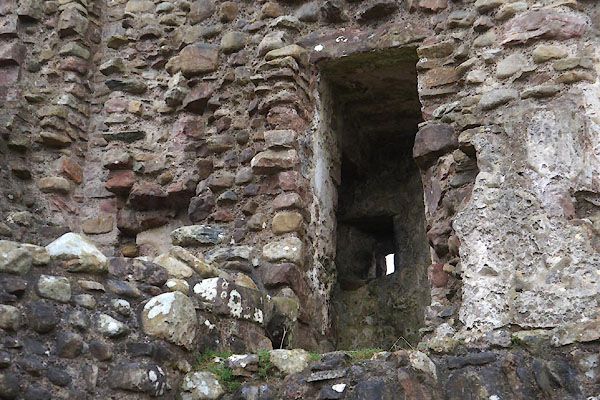
CEU50.jpg (taken 1.4.2016)
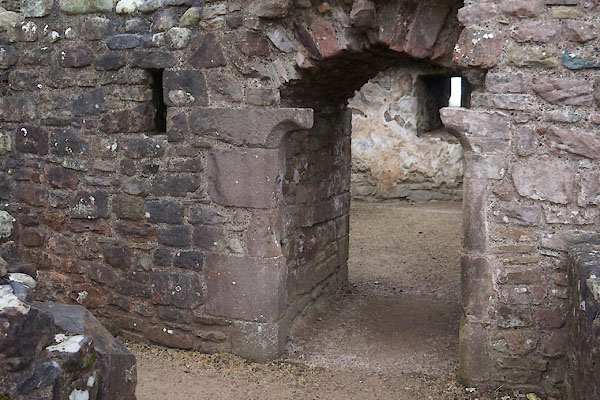
CEU51.jpg (taken 1.4.2016)
Great sorrow have they in their hearts,
But a new knight came to them that day,
Now hear of his deeds, and of his great strength
He returned to the tower, and siezed two shields,
He hung them on the battlements, stayed there a long time,
And hurled on the Scots three sharp javelins
With each of the javelins he struck a man dead ...
And ever he goes on shouoting: 'Soon shall you all be vanquished.'
When the fire deprived him of the defence of his shields
He is not to blame if he then surrendered.
Never by a single vassal was a conflict better maintained,"
